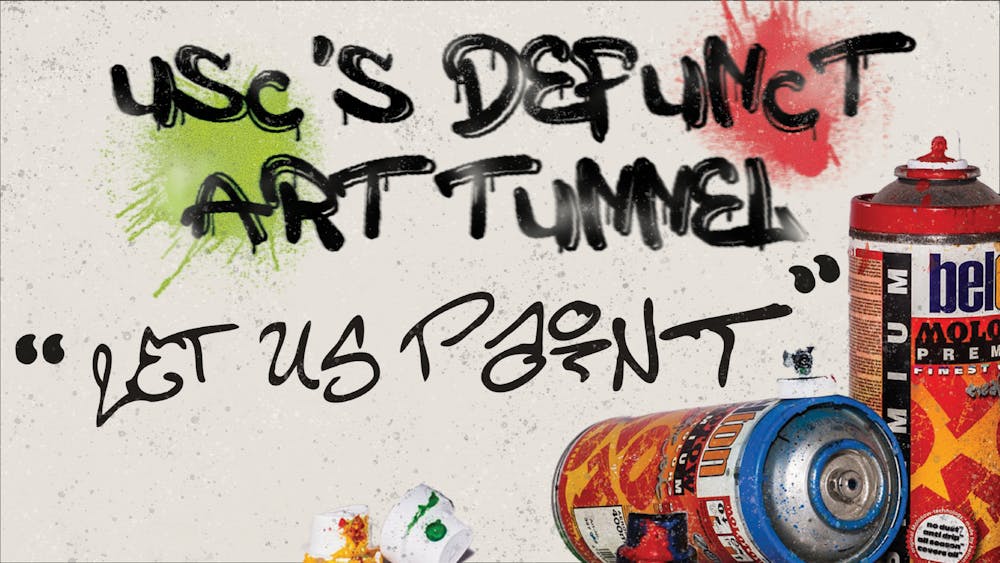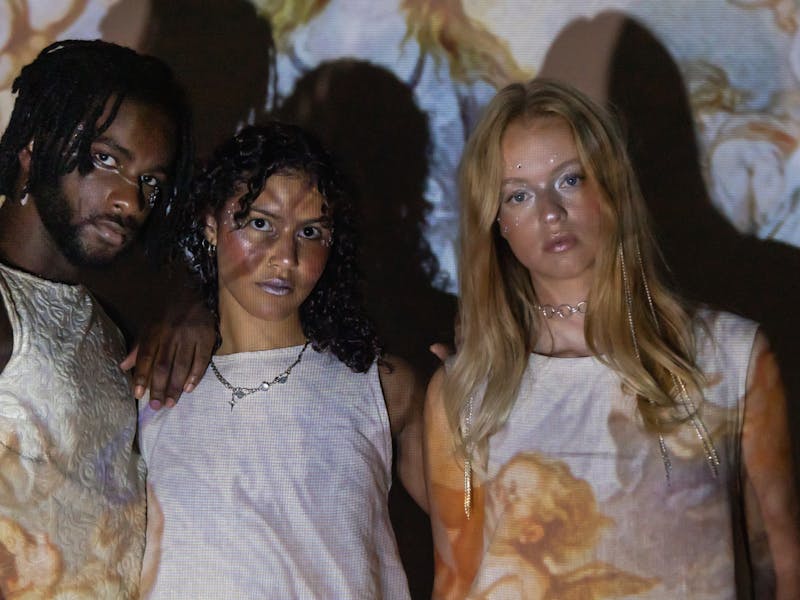Humans were born to create.
Be it an invention that leads to a groundbreaking scientific discovery, a book of poetry that inspires social change or a musical masterpiece that brings rooms of symphony-goers to tears, we as a species can and will create.
Visual arts permeate our society in increasingly innovative ways: on our screens, in galleries and sometimes even in city infrastructure. As an art form, graffiti has its origins in civilizations as ancient as the Roman Empire. More than two thousand years into the future, graffiti continues to be a popular mode of creating unique visual artworks often accompanied by a social or political message.
USC students have created their fair share of graffiti over the years, and up until recently, the tunnel underneath Assembly Street was a kaleidoscope of spray paint. Students painted anything from pride flags to animals to messages greeting their fellow Gamecocks. Now, if you enter the once-called "art tunnel," you'll see nothing but a fresh coat of paint.
Students are no longer allowed to decorate the walls, and any semblance of past student art is lost to time. Since the tunnel has been painted over, the majority of USC students today do not know that the art-studded tunnel ever existed.
Some students have left small sharpie inscriptions in the tunnel, imploring university leadership to allow the tunnel walls to become canvases again. While you will not see any art in the tunnel, you will see small, periodic postings reading, "LET US PAINT".
The backlash against graffiti in the art tunnel, in addition to student outcries for the art tunnel to be reinstated as such, begs the age-old question:
Is graffiti art?
This question has sparked heated discourse for decades. On one hand, graffiti artists argue that their work is no less valid a means of self-expression than is any other art form. However, some consider graffiti to be nothing more than vandalism.
Let's start with the very basics.
The Oxford English Dictionary describes art as "the expression or application of human creative skill and imagination, typically in a visual form such as painting or sculpture, producing works to be appreciated primarily for their beauty or emotional power".
Art is famously subjective, but it is fair to say that many of the works in the art tunnel were artistically compelling — if not to others, then to the person who created them. By definition, graffiti is art. But this does not absolve it of its vandalistic reputation.
Vandalism describes damage done to private property, and it carries a misdemeanor charge in the state of South Carolina. As long as the university prohibits graffiti in the tunnel, students can face repercussions if they choose to embellish the walls with their own creations.
Graffiti is art, but it is also vandalism. The two do not have to be, nor are they, mutually exclusive.
USC is a place that claims to value student individuality and expression. Some students wonder if a single tunnel adorned with graffiti is all that grave of a vandalistic risk, especially when contrasted by the amount of joy that the on-campus canvas provided for budding artists. That joy is certainly worth something, and now, it has been extinguished. And for what real purpose?
The question is not clear-cut, but the beauty of art lies in the nuance.



